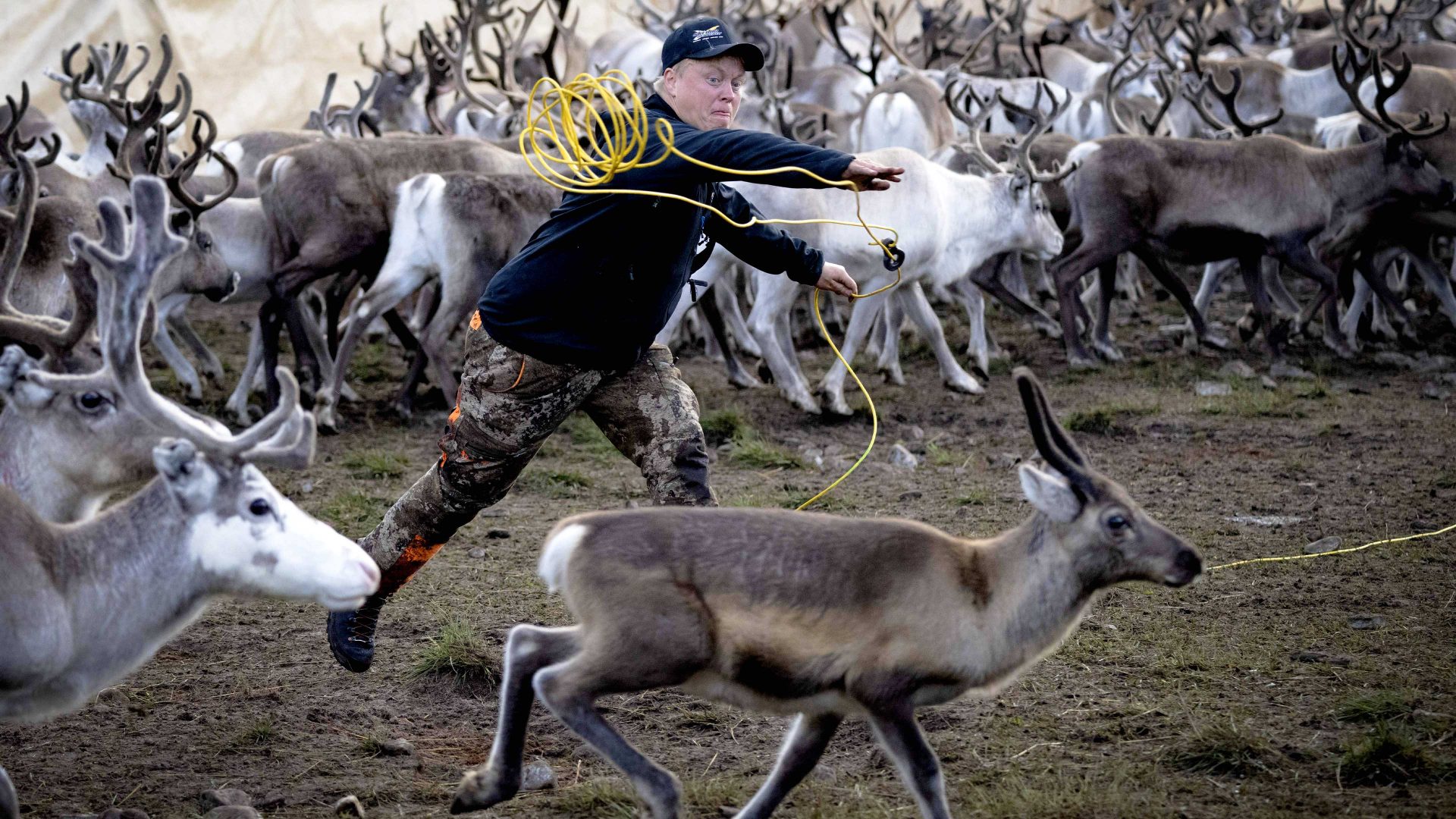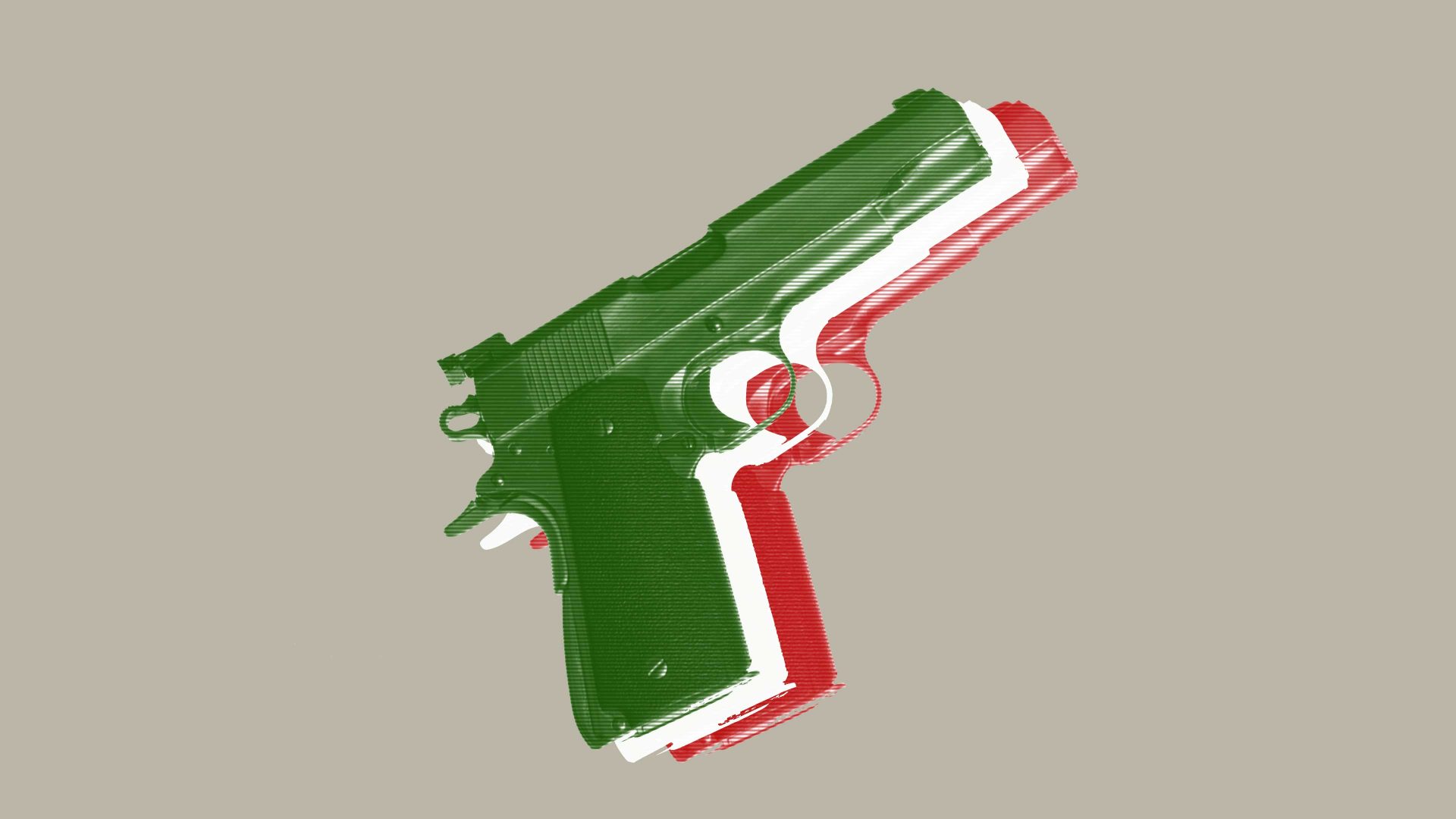Once a year on Storgata, the main street in the Norwegian Arctic city of Tromsø, they have to make sure there is plenty of snow.
On my most recent visit, the weather had been hovering unseasonably above zero and so there was no choice but to shift snow from other parts of the city ready for one of the defining events of the Sámi people’s annual calendar: the reindeer races.
It was my first time at these February races, in which a reindeer pulls a rider on skis for 200 metres, so fast that if you blink you’ll miss them.
I walked the length of the course, looking for the best place to watch the headline event of Sámi Week, inaugurated in 2004 to celebrate Sámi National Day. There are about 80,000 people in “greater Tromsø”, and its population has been growing steadily since my first visit in the early 1990s. It felt like they were all here in Storgata, some dressed in the bright blues and reds of the Sámi national costume.
There are an estimated 100,000 or so Sámi people living in Sápmi – the preferred indigenous name for what Europeans call Lapland. The majority are in Norway, but there are significant numbers in Sweden, Finland and Russia’s Kola Peninsula. There are thought to be nine distinct Sámi languages, some of them critically endangered after centuries of enforced assimilation, urbanisation and, in the 19th century, aggressive “conversion” to Christianity.
Although the Sámi have their own “parliaments” in the Nordic nations, the traditional nomadic way of life – based on moving with vast reindeer herds according to the changing seasons – faces a variety of threats.
One such threat was spelled out as I watched Mikkel AO Eira and his reindeer, Vielggut, surge across the finishing line in a blur, at an average speed of nearly 30mph, a full second ahead of his competitor in the two-reindeer final, to claim the 20,000 kroner (£1,500) prize pot. Tromsø’s unseasonal (but increasingly common) brief thaw, replicated on the grazing lands, can create a layer of ice that makes it hard, or impossible, for the reindeer to graze on the lichens on which they survive through winter.
Back in the 1980s, the fall-out from the Chernobyl disaster posed an existential threat as tens of thousands of reindeer had to be culled after eating contaminated lichen. More recently, new roads and Norway’s controversial plans to build a new railway (now in doubt because of the Kr280bn cost) threaten traditional migratory routes for those who still follow the reindeer herding tradition.
The Norwegian Sámi parliament had not been in existence for long when I first stayed in a traditional lávvo, a tipi-shaped tent of birchwood, reindeer hide and canvas. During that visit, in the early 1990s, we ate reindeer stew and slept on beds of heather twigs and reindeer skins round a central fire. I still have my birchwood plate and mug as a souvenir.
On a visit in 2013, our host, Per Stian Sara, a local Sámi leader, held up a shamanic ceremonial drum. It matched a 17th-century runic drum recently repatriated from the National Museum of Denmark, in Copenhagen. Such drums were central to Sámi culture before the missionaries wrought havoc. The drum would be struck with a reindeer antler and a metal ring would be used with various symbols to foretell events. In parallel with other indigenous cultures, the Sámi shaman could also enter a trance and visit different “realities”, including joining the spirits of the dead.
When I visited in 2013, I stayed at a Sámi camp to watch the Northern Lights, close to the borders of Finland and Sweden, where one of the guides told me how unhappy he had been working shifts at a food factory, prompting him to give up “security” and return to the nomadic lifestyle. He explained how reindeer must be broken before they can be harnessed to sledges, or used to tow skiers in races. They are immensely strong. The breaking process does not make for easy watching.
Back in Tromsø a decade later, I visited a Sámi village that boasted many more reindeer than people. Tourists were given a bag of feed and invited to enter the reindeer compound. I learned just how powerful they are. They are easily strong enough to take the bag of feed from you. Those skulls are hard as iron.



